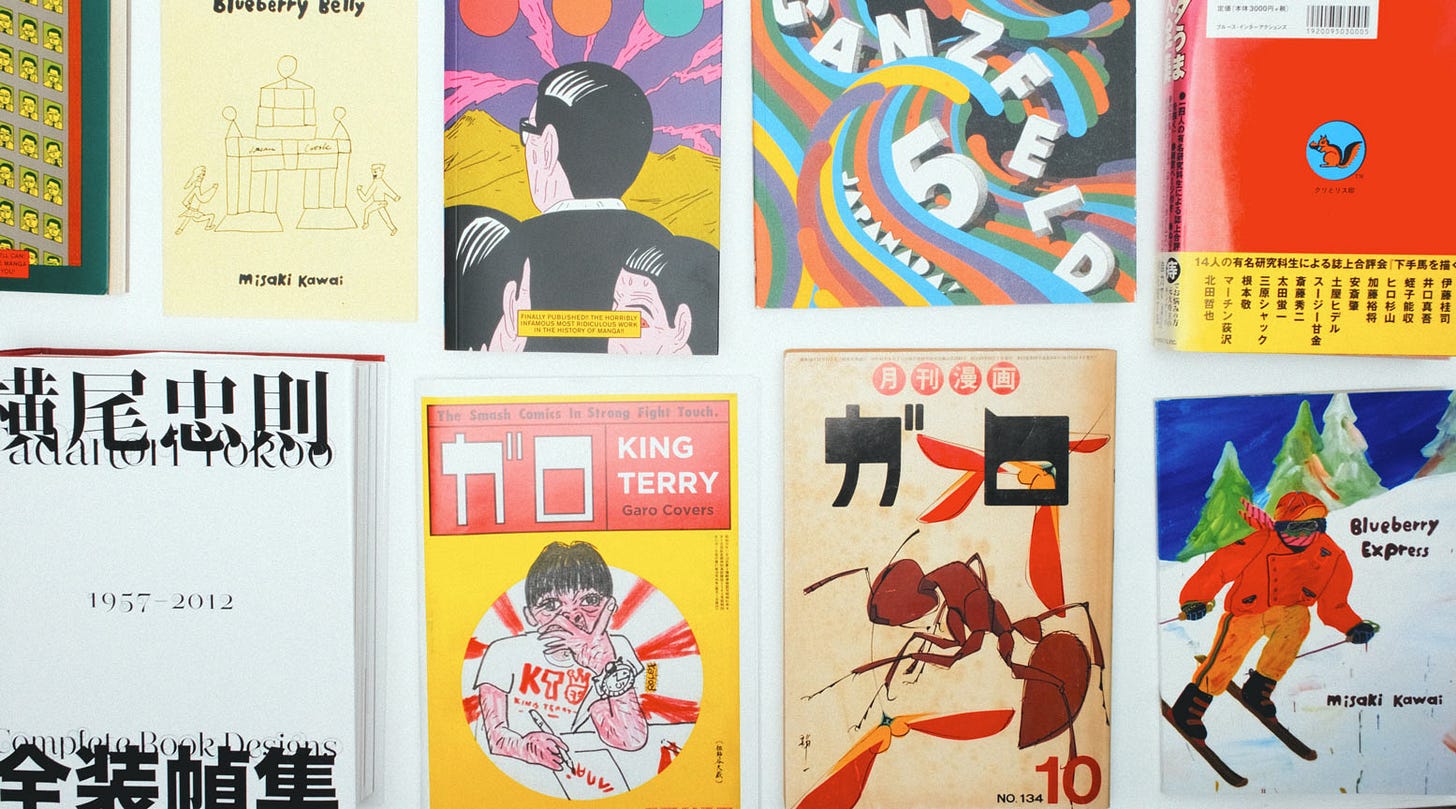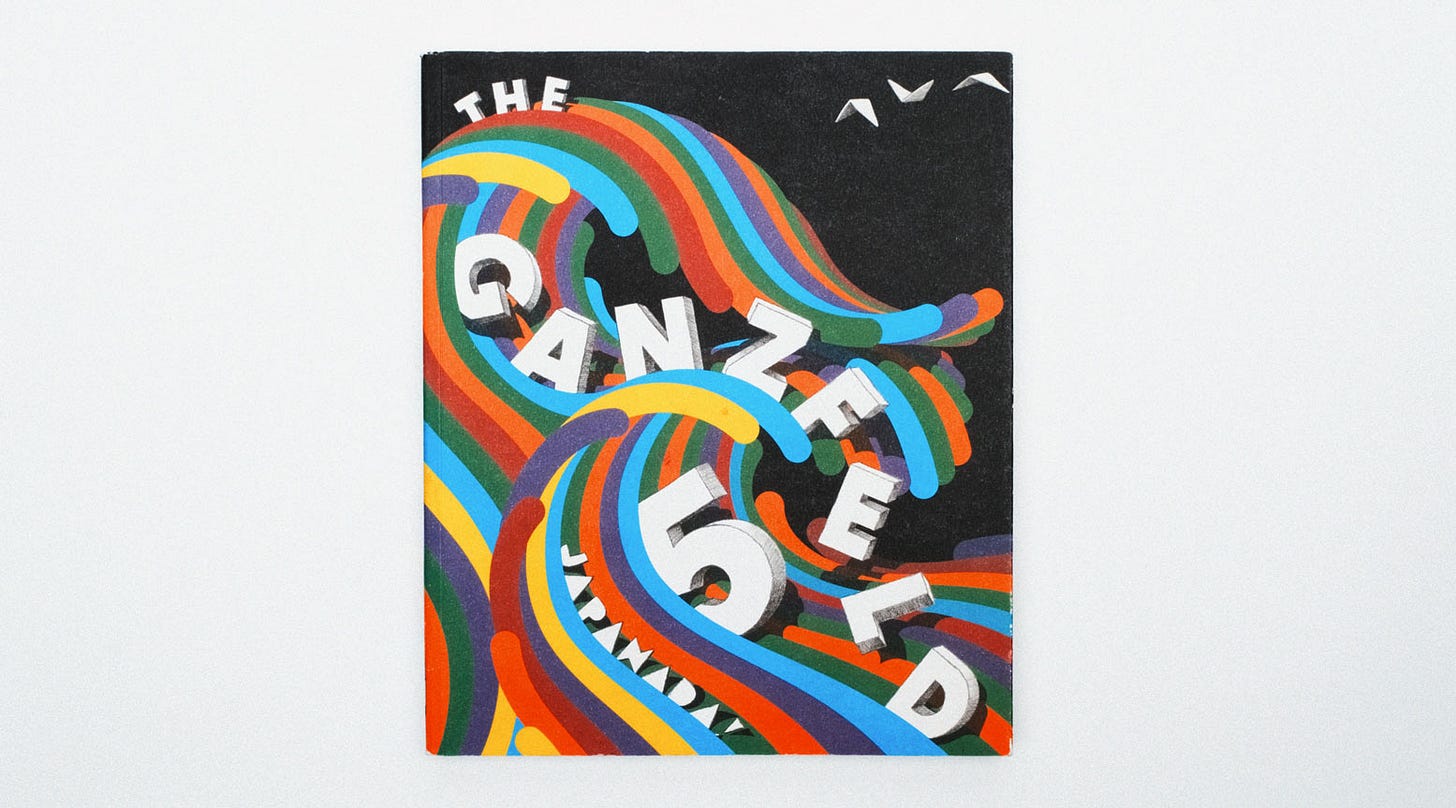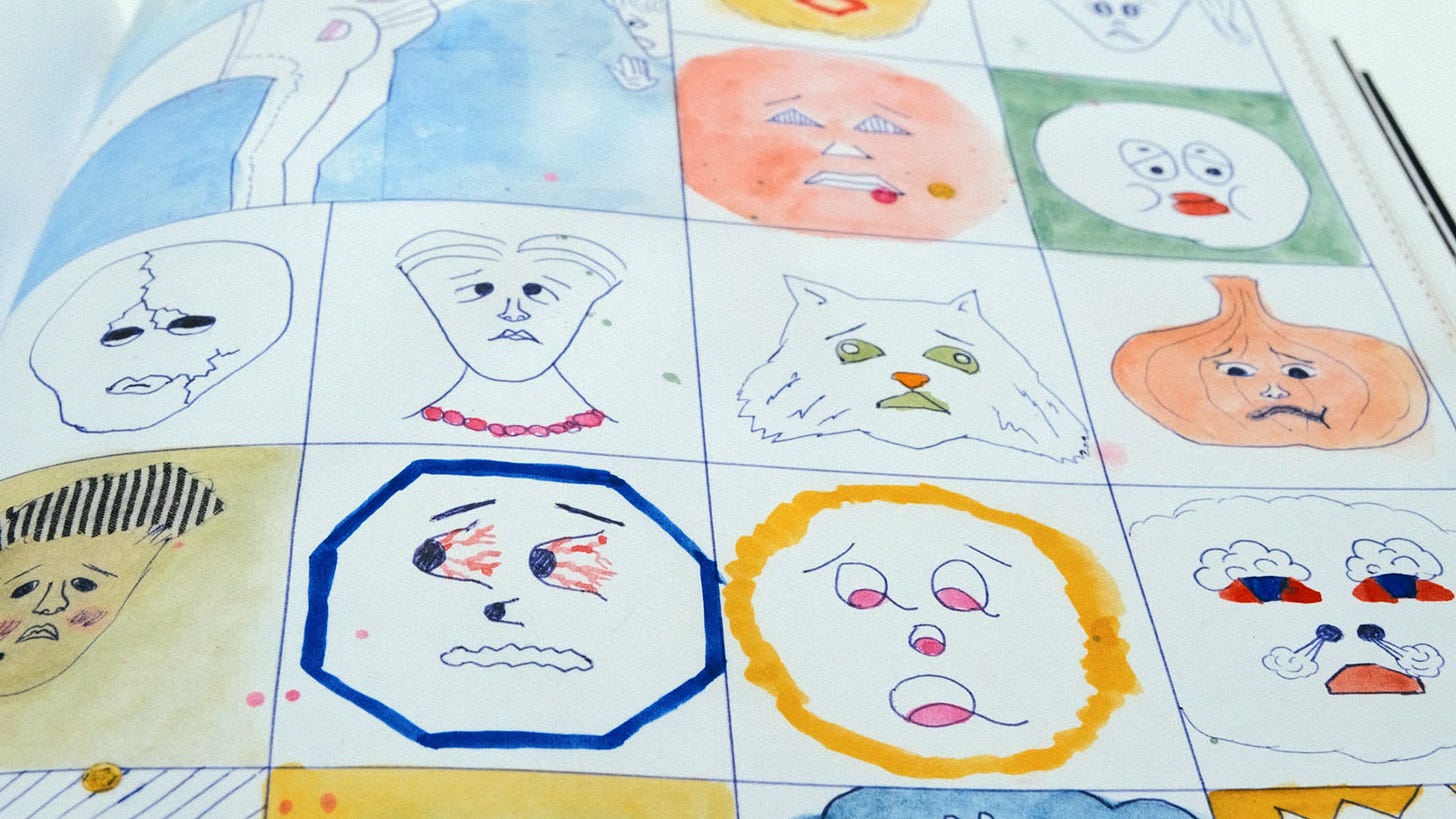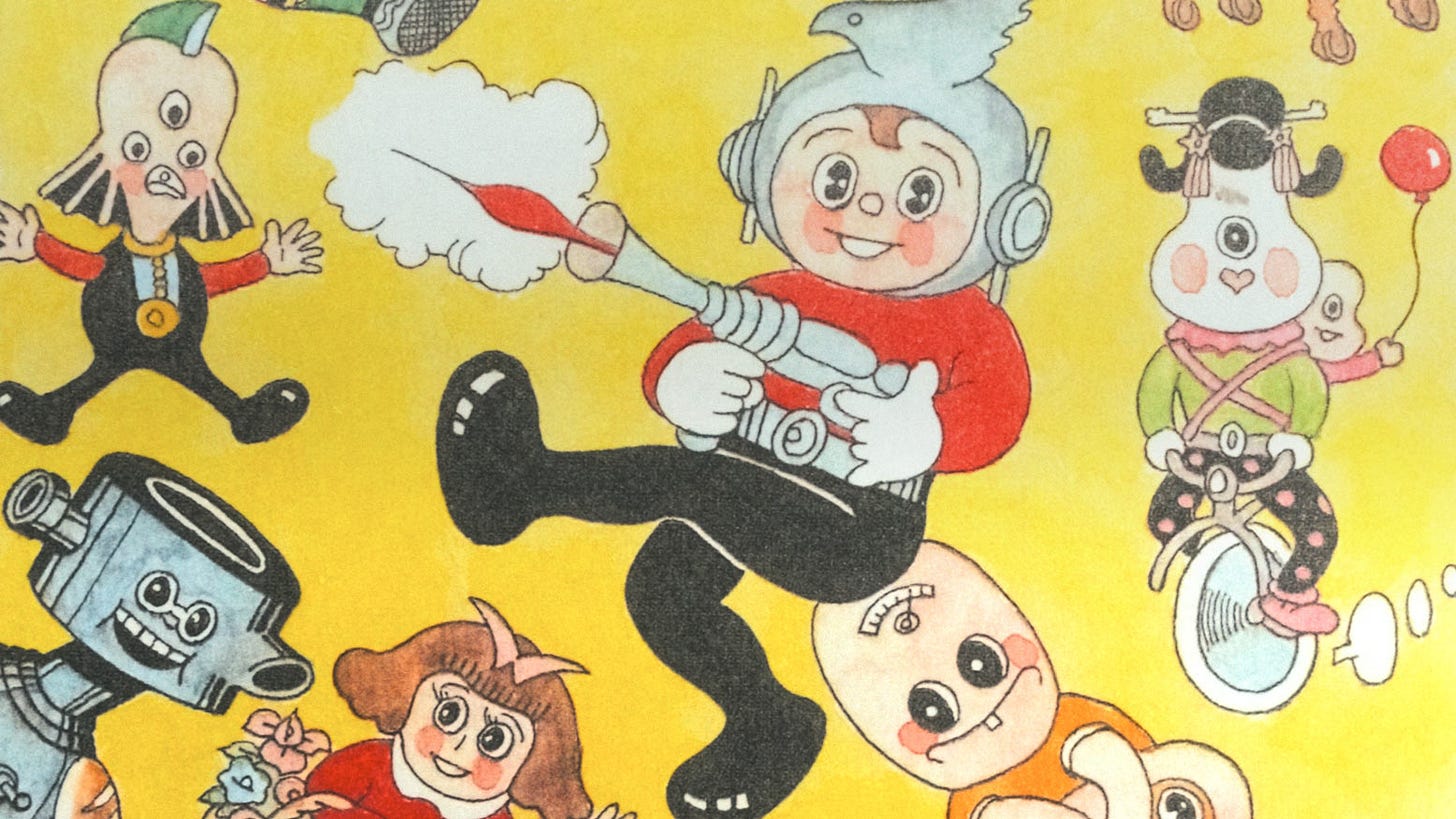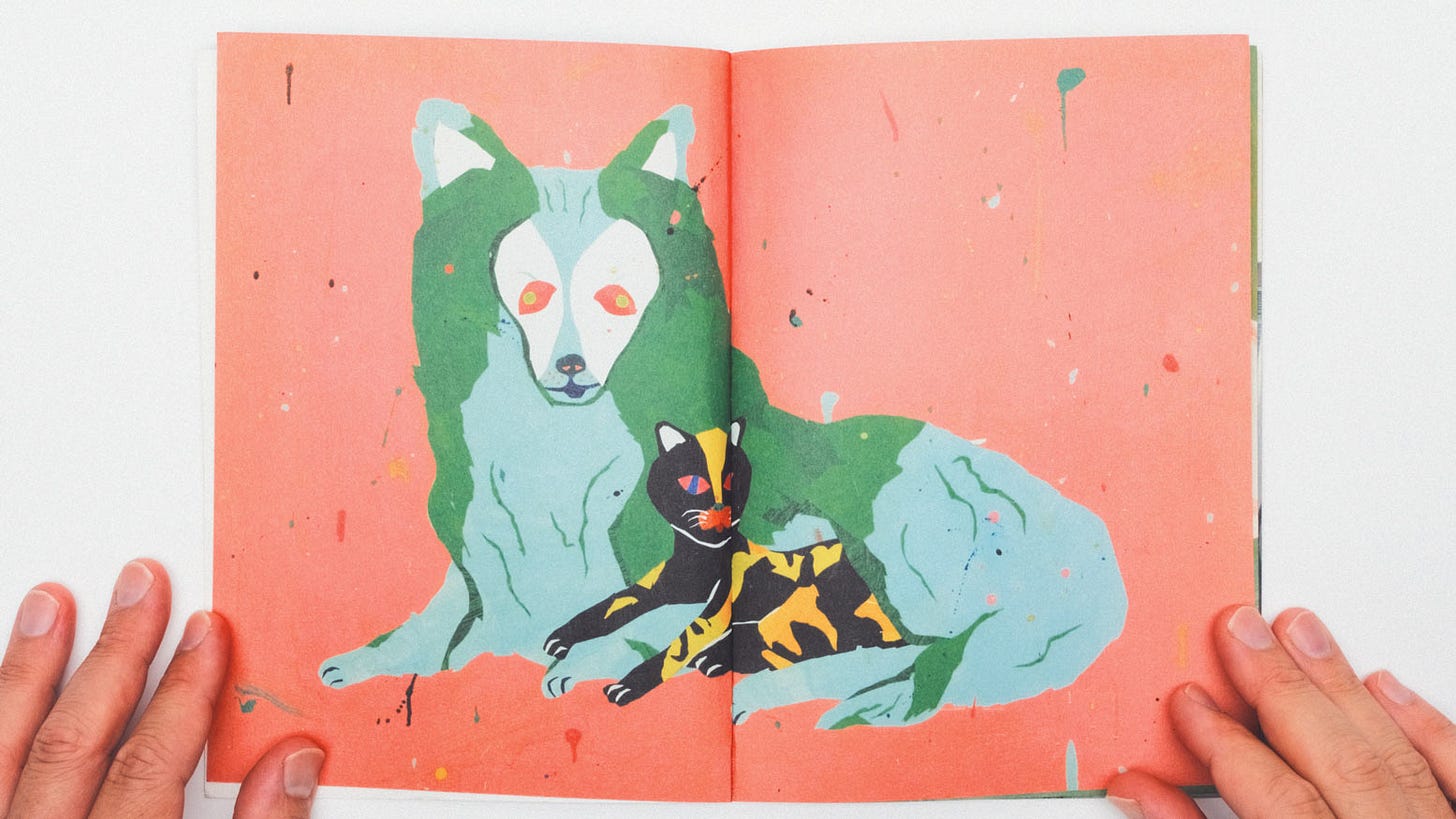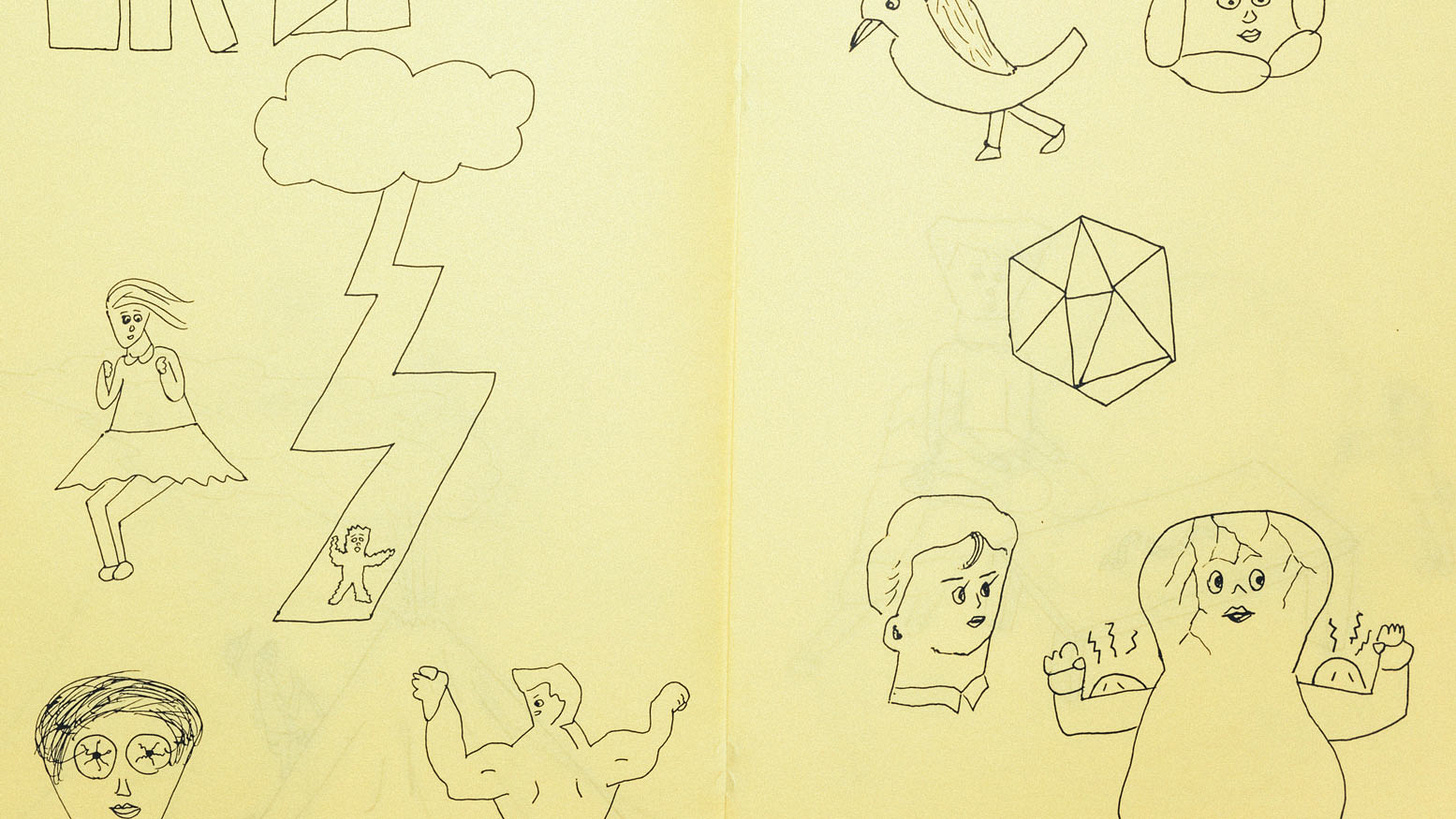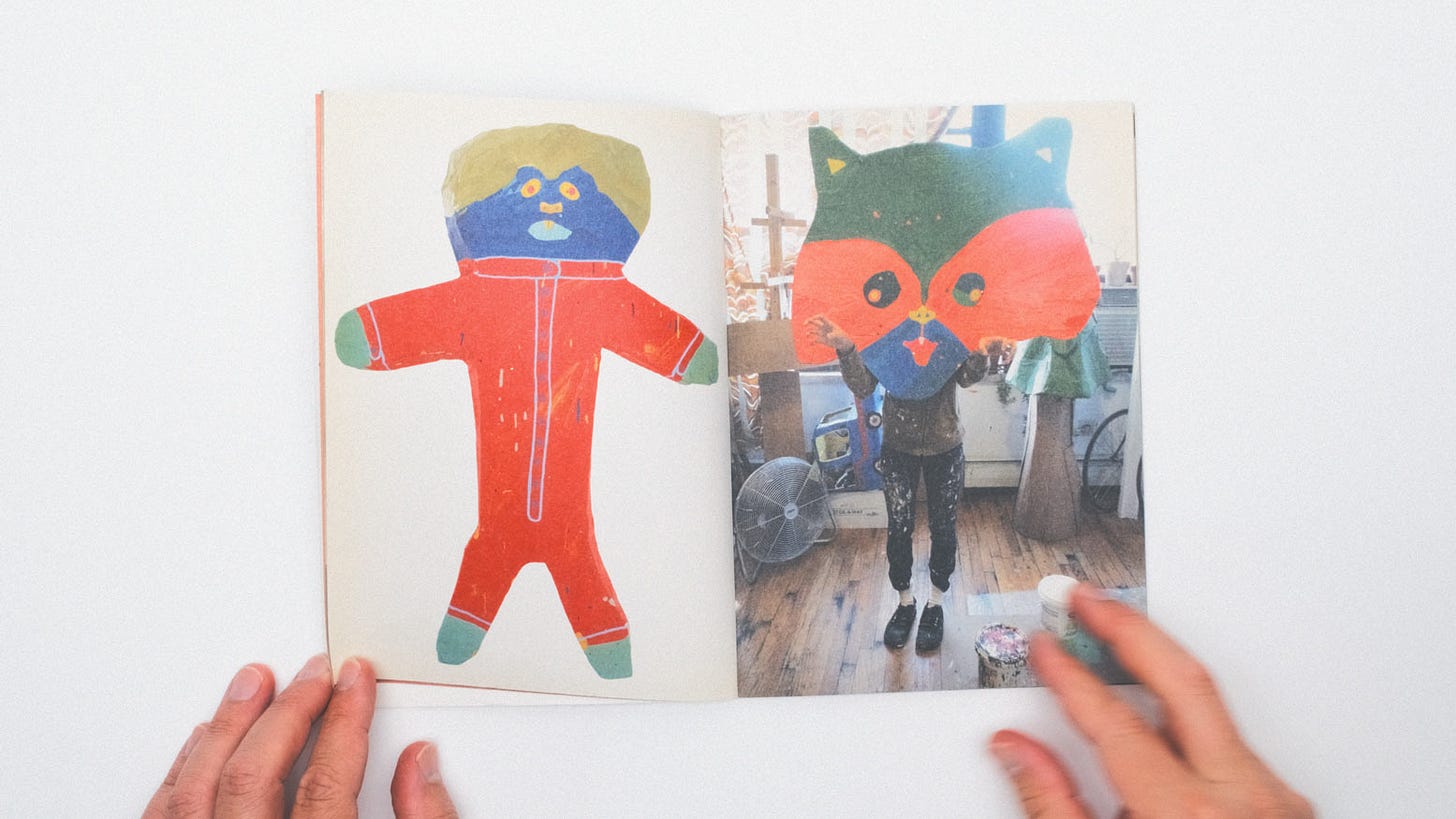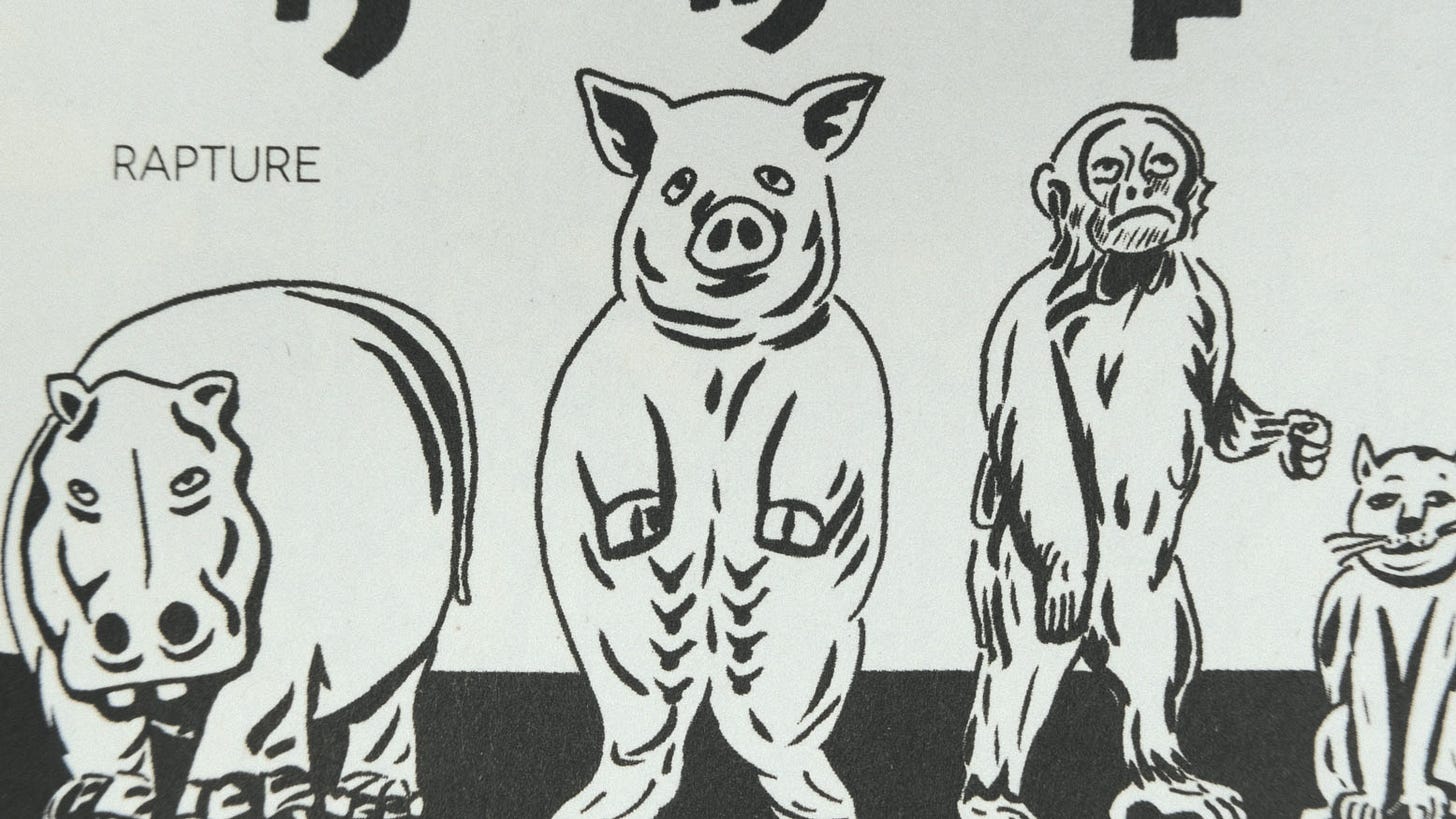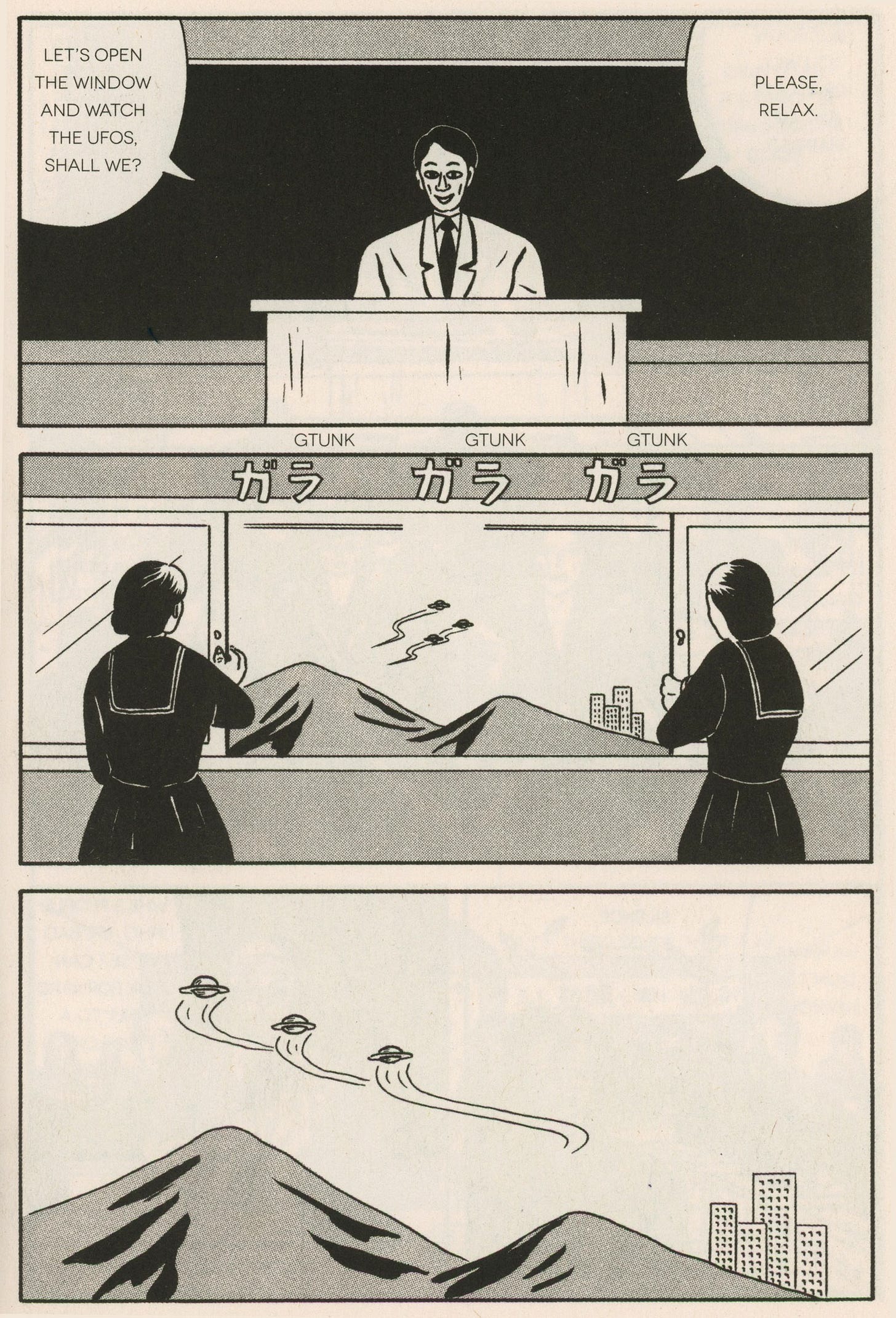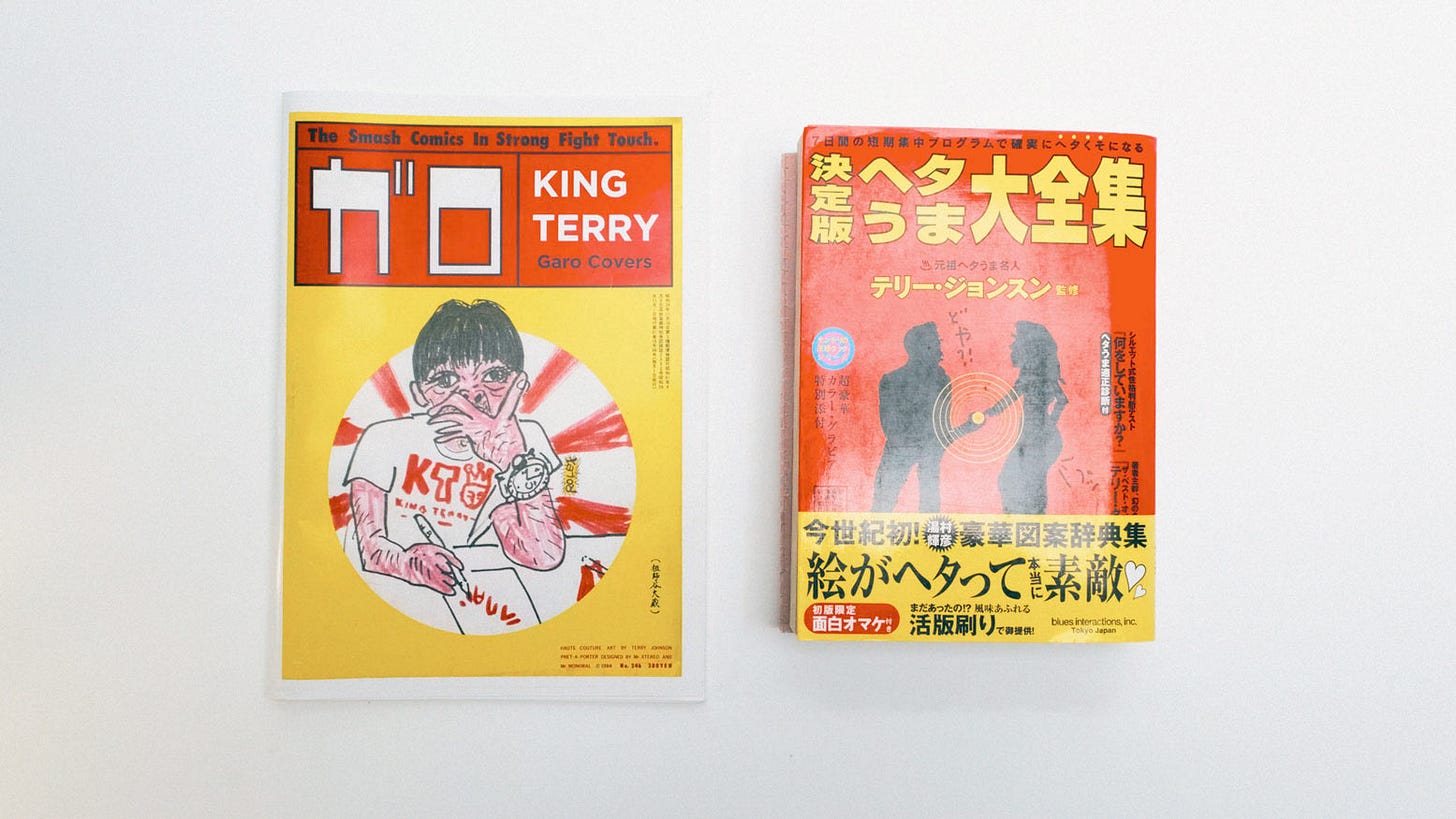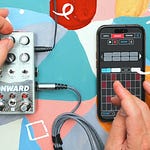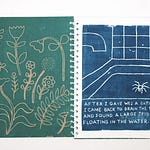In Japan in the 1970s, an art movement known as heta-uma began in the underground manga magazine Garo. Heta-uma translates to “bad-nice” or “unskillfully good,” and the artists who adopted this style rejected the slickness of commercial art and embraced a more childlike approach to art-making. When I first encountered this work 20 years ago, it unlocked something in my brain—I wanted to make art that was this free. The following books were my guides towards an art practice that celebrates imperfection.
Ganzfeld 5
This book was my first introduction to Heta-uma. In the early 2000s—before art blogs and Instagram—I got my inspiration from books, many of which came from Dan Nadel’s PictureBox Inc. From 2000 to 2014, Nadel released some of the most beautifully produced books on underground art, including Ganzfeld 5: Japanada!, which features the work of heta-uma heavy-hitters like King Terry, Shigeru Sugiura, and my personal favorite, Misaki Kawai.
Misaki Kawai
Misaki Kawai might be my oldest art crush. I mailed her fan art back when I was an art student and I love her work to this day. Her paintings are equal parts funny and beautiful—and always unexpected. Both of these zines were published by Nieves in Switzerland, which produces some of the most stunning contemporary art zines around.
Ebisu Yoshikazu
I got these two books within the last year and they’re… gnarly. In fact, the covers are so violent that I’ve opted to show the back covers instead. Heta-uma is very much about breaking taboos, and Ebisu does so with glee. I’ve avoided these books for years, precisely because they are so shocking, but I’ve come around for a few reasons. First, I love Ebisu’s drawing style. Second, there’s a dream logic to his stories that I find really appealing. In one story, a teacher stops his class to admire flying UFOs—it doesn’t relate to anything, and yet it’s wonderful. But to say these stories are gross is an understatement. Heed the warning on the back of the book: “Walk away while you still can! Puerile and deplorable manga lies herein. Not for you!”
King Terry
King Terry is considered the father of heta-uma, and his work has a raw quality to it that I admire. His book on the right—The Complete Collection of The Basket Plan (according to Google Translate, though that’s almost certainly incorrect)—includes a great introduction where the artist explains why he’s drawn to this work. To paraphrase: drawing is fun, but putting too much emphasis on technical skill can drain the spirit from your art, and that spirit is the most important part. He advises the reader to relax and enjoy drawing with friends and family. I couldn’t agree more. Happy drawing!



